By Alex Trukan
Full backs’ position has evolved over the years. Involvement of full backs in attack seemed very unorthodox several years ago, whereas now it is considered as a minimal standard required. Recent years has seen this position evolving even further. Primary example includes Bayern Munchen under Pep Guardiola, which introduced full backs playing in a more central positions and being a vital part in attacks on the opposition half. Being a full back in this case has started to overlap with defensive midfielder’s role. That has posed much more technical as well as tactical demand upon full backs, which now have to play in much tighter spaces with more options available as well as pressure applied. That should be reflected in our coaching approach.
In the first phase of the build-up, after the team secures possession and gets organised, full backs should try to recognise a trigger to start movement into central areas. One of the possible triggers might be when centre back on the ball is not pressurised and moves towards the wide areas into half spaces between being positioned fully centrally and wide.
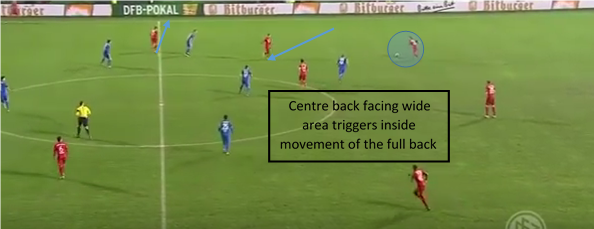
That type of movement will open up an option to play to the winger as well as create an overload in the central areas. Full back on the opposite side might also choose to go into the middle but only if defensive midfielder starts dropping between the centre backs to form a back three. Having two full backs in the central areas will provide at least four players (adding central midfielders) positioned in the middle what creates numerous options to play forwards.
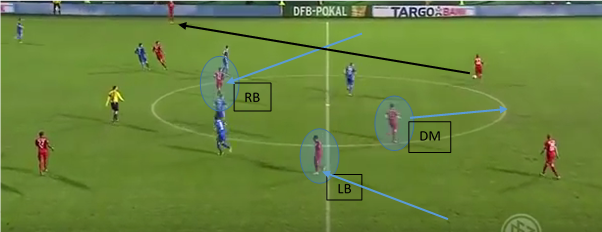
It can be seen on the diagram below how the team attacking shape looks like with two full backs playing narrow and taking up defensive midfielder’s positions and with defensive midfielder dropping between two centre backs. Wide areas in turn (normally occupied by full backs) can be used by wingers as well as midfielders dropping into them.
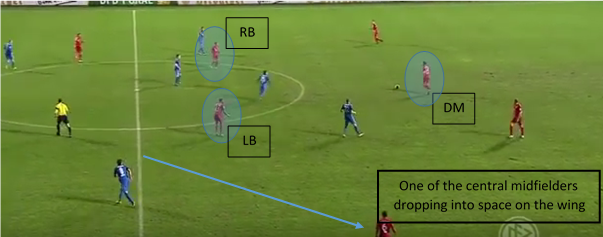
Full backs playing in central areas gives opportunities to utilise them more as a playmakers who can distribute the ball in the opposition half. That is why technical abilities like staying on the ball, long passing or through balls would be crucial in their toolbox. What might also happen at times is full back driving forwards with the ball what links to typical position requirements but would usually happen in tighter spaces with more players around the ball.
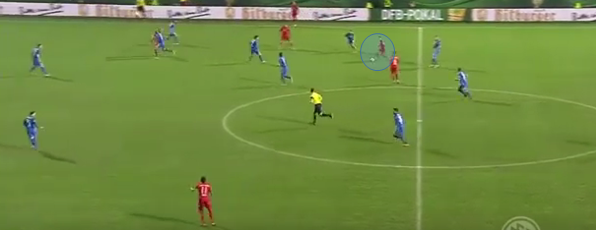
Another option includes full backs moving into central areas only in the second phase of the attack, on the opposition half. That is based on several possible movements. One of which is a combination play with a winger to then drive inside in an underlapping fashion. Key role is played by the strikers and midfielders who should stay away from the ball creating the space for the combination play to take place as well as being in a good position to make forward runs.
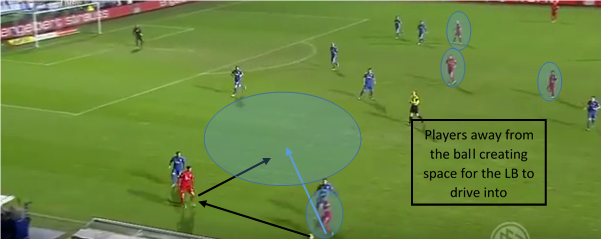
As it can be seen below, full back on the ball is the player that makes a final decision and often a key pass on the opposition half to finalise the attack. Having full back in a ‘playmaker’ position gives licence for midfielders as well as wingers and strikers to make forward runs or receive the ball closer to the opposition goal.
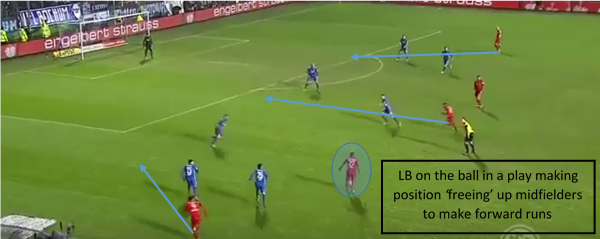
Crucial advantage of having full backs in central areas is also a defensive cover they provide upon losing possession. Protecting central areas and forcing the opposition wide slows down the attack and moves the ball away from the goal.
By Alex Trukan, Development Coach, Nottingham Forest
@AlexTrukan


